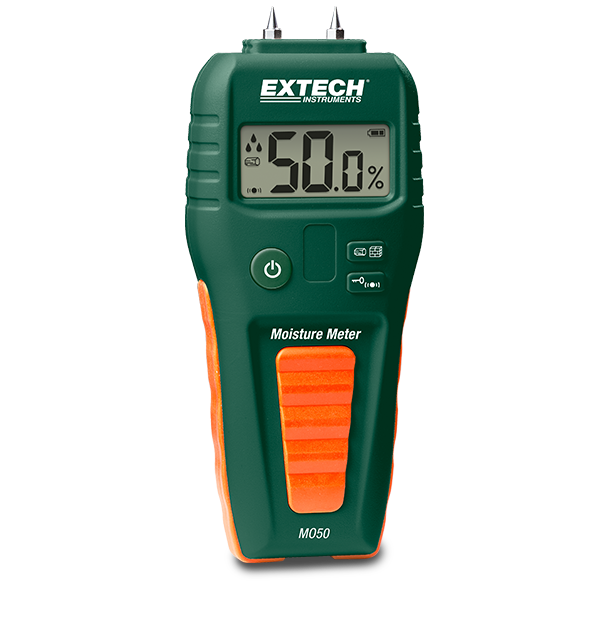The Ultimate Overview to Picking the Right Moisture Meter for Your Demands
The Ultimate Overview to Picking the Right Moisture Meter for Your Demands
Blog Article
Recognizing the Relevance of a Moisture Meter in Stopping Mold and Water Damage in your house
In the world of home maintenance, the visibility of dampness can typically be a quiet yet formidable adversary, with the ability of causing pervasive mold growth and dangerous water damages if left unattended. In the middle of the serene setting of a home, hidden dampness concerns can make underneath the surface area, posing a threat to both residential property and wellness. However, geared up with the right tools and knowledge, home owners can proactively fight these prospective risks. Comprehending the significance of a moisture meter in this battle is not just an alternative however a critical necessity.
Value of Moisture Discovery
Effective dampness detection methods are essential for protecting residential or commercial properties and protecting against potential mold development and water damages. Wetness can permeate into different structure materials, leading to structural issues and health and wellness threats. By utilizing a dampness meter, homeowner can proactively determine areas prone to excess dampness, enabling prompt intervention and mitigation methods.
Moisture meters supply exact analyses of wetness levels in various materials such as concrete, drywall, and timber. This information helps in determining areas of issue, also in hard-to-reach or surprise areas. Early discovery of dampness build-up makes it possible for prompt repair work or changes to stop further damage.

Just How Moisture Meters Work
Dampness meters play a crucial duty in the proactive recognition of excess moisture, helping in the prevention of possible mold growth and water damage by giving precise analyses of moisture degrees in different structure materials. These gadgets work based on different concepts, relying on their kind. Moisture Meter. Pin-type moisture meters, for instance, have two pins that pass through the product to determine the electric resistance between them. When wetness exists, it boosts the product's conductivity, resulting in a reduced resistance reading. Pinless dampness meters, on the various other hand, use electromagnetic sensing units to scan the material without triggering damage. These sensing units release electro-magnetic signals that penetrate the product and gauge the dielectric buildings, showing dampness material. Some progressed dampness meters incorporate both pin and pinless modern technologies for comprehensive moisture detection. Comprehending just how moisture meters feature is important for prompt and exact dampness degree evaluations, allowing efficient safety nets versus mold and water damage.
Detecting Early Indication
Upon preliminary inspection of a residential property, identifying subtle signs of excess wetness ends up being important in the very early detection of potential mold and mildew growth and water damage. Water stains can signal leakages or infiltration, while peeling paint or wallpaper might be an outcome of wetness endangering the adhesion of these products to the surface area. Furthermore, a rise in allergic reaction signs and symptoms or respiratory system concerns amongst occupants might recommend the existence of mold due to excess wetness.
Protecting Against Mold Growth
Recognizing very early caution signs of excess wetness within a residential property not only enables prompt detection of potential mold growth and water damages yet additionally offers as a proactive measure in stopping the spreading of mold. To efficiently avoid mold and mildew growth, it is important to resolve any kind of sources of wetness immediately.
Keeping an eye on wetness degrees in locations prone to moisture, such as basements and crawl rooms, utilizing a wetness meter can also help in very early discovery of raised moisture degrees and possible mold and mildew growth - Moisture Meter. By taking positive actions to stop excess dampness and mold and mildew development, home owners can secure their residential or commercial property and indoor air high quality.
Benefits of Routine Tracking
Routine tracking of dampness degrees in a building can play a critical role in preserving a healthy and balanced interior setting and stopping potential mold and water damages. By routinely inspecting dampness degrees, home owners can spot any concerns without delay and take necessary actions to avoid mold growth and water damages. Among the vital advantages of routine surveillance is very early discovery. By recognizing and attending to high wetness degrees beforehand, property owners can intervene prior to mold has the chance to spread out and create. This proactive technique can save both money and time in the future by stopping extensive mold remediation and repair service costs.
In addition, normal monitoring enables home owners to track patterns and trends in wetness degrees over index time. Ultimately, the constant monitoring of dampness levels empowers home owners to protect their residential property, safeguard their health, and protect the honesty of their interior setting.

Final Thought

By making use of a moisture meter, building proprietors can proactively recognize areas vulnerable to excess moisture, enabling for timely treatment and mitigation methods.

Monitoring wetness degrees in areas susceptible to moisture, such as basements and creep rooms, using a wetness meter can also help in early detection of raised dampness degrees and prospective mold development. (Moisture Meter)
Report this page